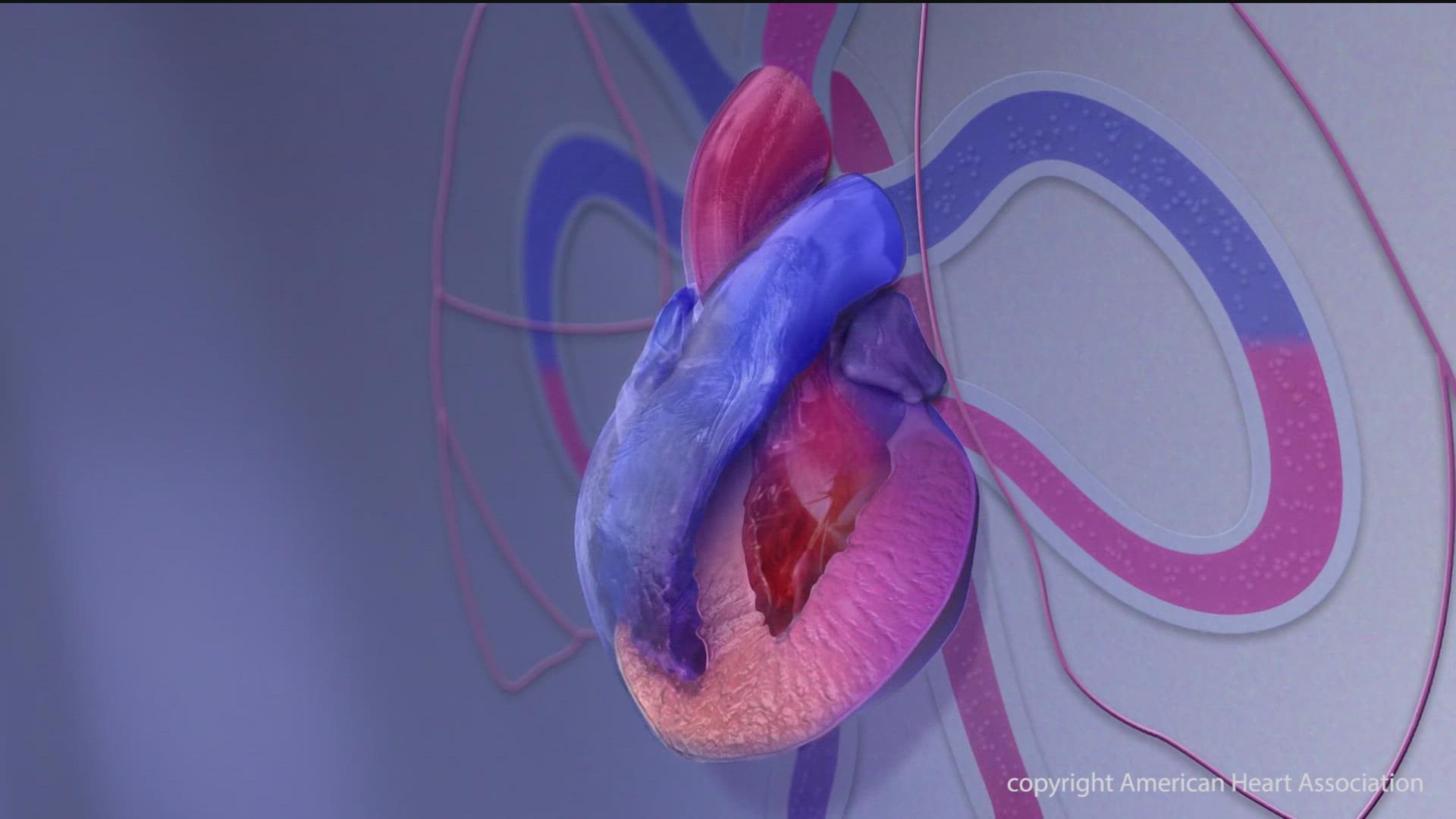SAN DIEGO — It was a shock to the sports world when football star JJ Watt had to have his heart shocked back into rhythm. The Arizona Cardinals player recently went into Atrial Fibrillation (A-fib), a heart condition that can cause a stroke and even death.
A-fib affects more than 5 million adults in the U.S. That includes a San Diegan, and former Division 1 tennis player, Candice Donahoe.
“I played tennis for Torrey Pines High School. We were superstars! We had six nationally ranked tennis players on our team,” Candice said with a smile.
She received a Division 1 scholarship to Indiana University. After college, Candice brought that competitive mindset to marathons.
In 2001, Candace was training in San Diego’s finest half marathon.
“20 yards to the finish line I collapsed into the chain-linked fence. I woke up on a stretcher with the paramedics all around me,” Candice recalls.
She was originally told the blackout was due to dehydration, but the problems persisted.
For the next two years, Candice felt out of shape, out of breath and even collapsed a few more times.
It was after a jog when her dad, a doctor, noticed her face was very pale.
“He said let me check your pulse and he couldn’t count my pulse,” Candice said.
After several doctors’ visits and opinions, Candice eventually saw an Electrophysiologist, a doctor specializing in the heart’s electrical system.
“He did a second study and diagnosed me with atrial fibrillation and atrial flutter,” Candice said.
A-fib affects an estimated 5 million U.S. Adults, according to the CDC.
“I ran a marathon. I played sports my whole life. How could there be something wrong with my heart,” Candice said.
“We often say if you live long enough, you’ll develop atrial fibrillation. Often time in younger people we tend to make a long time to make that diagnoses, because we assume it’s often something else but not something as serious as A-fib,” said Sharp Cardiologist, Dr. Charles Athill with San Diego Cardiac Center.
Candice’s doctors found part of her heart’s electrical pathway was beating four times higher than normal.
“It’s a very chaotic heart rhythm,” Candice said.
Candice’s ongoing health complications sparked her interest in getting into the medical device field. In fact, the Insertable Cardiac Monitor (ICMs) she eventually had implanted next to her heart is from the MedTech company she works for.
The device, smaller than a AAA battery, helped monitor her heart activity, which led doctors to perform a cardiac ablation that zapped the circuit her heart was taking so it would no longer spike.
“Right now, I know what the triggers are and what things I need to do to make sure I don’t push myself beyond the limits,” Candice said.
Turns out, heat was triggering Candice’s heart rate and she’s not the only one avoiding triggers now.
“Since I was diagnosed my mother and her brother both got diagnosed with A-fib, turns out it was in the family,” Candice said.
“I think the experience that we’ve both had with A-fib is you really have to be more persistent when you feel something isn’t right,” Candice’s mother, Maureen Donahoe, said.
Two decades since that first collapse, Candice recently got the cardiac monitoring device removed. The once uber-competitive athlete admits scaling back has been hard.
“I think it’s important for her to share this story, just so people are aware,” Maureen Donahoe said.
“It’s really important you listen to your body, go see a doctor if you don’t feel good,” Candice said.
The CDC says 2% of people in the U.S. under the age of 65 have A-fib. That number jumps to 9% over the age of 65.
130,000 people die from A-fib each year and the number of people with A-fib is expected to double by 2030.
While you can’t prevent A-fib entirely, you can take action to keep your heart healthy. That includes keeping your blood pressure and cholesterol levels low, and maintaining a healthy weight and diet.
WATCH RELATED: Prostate Health: A Simple Screening Can Save Your Life (Oct. 7, 2022)

